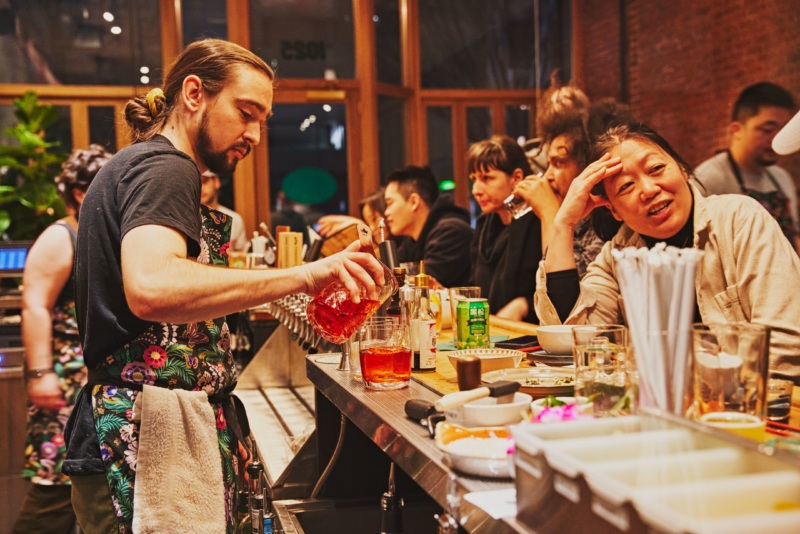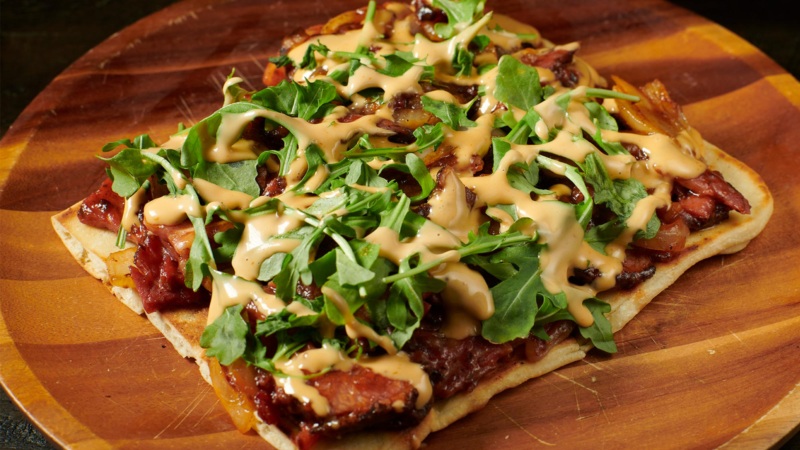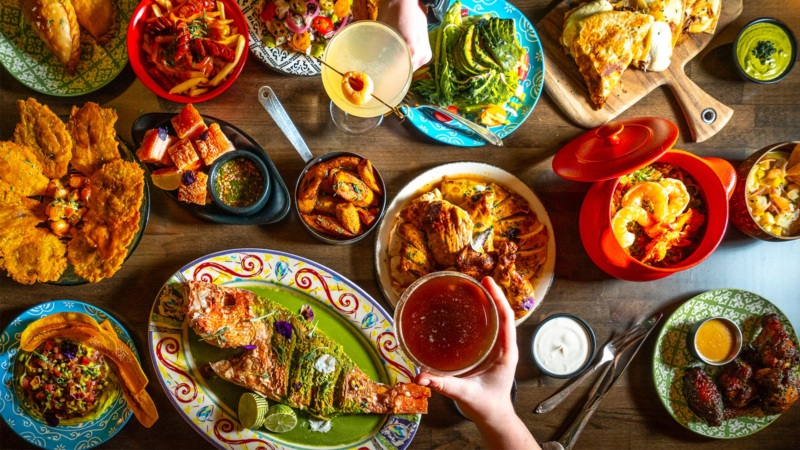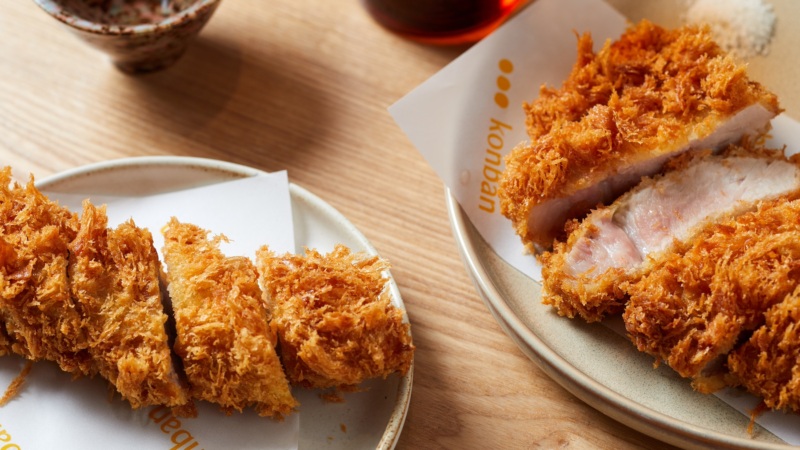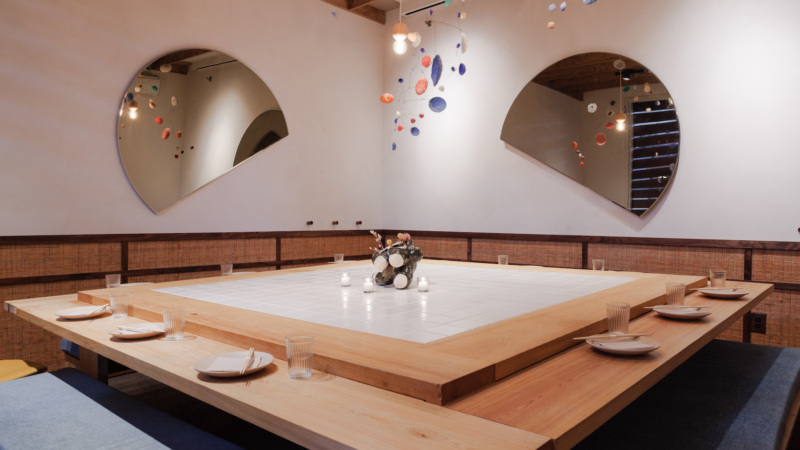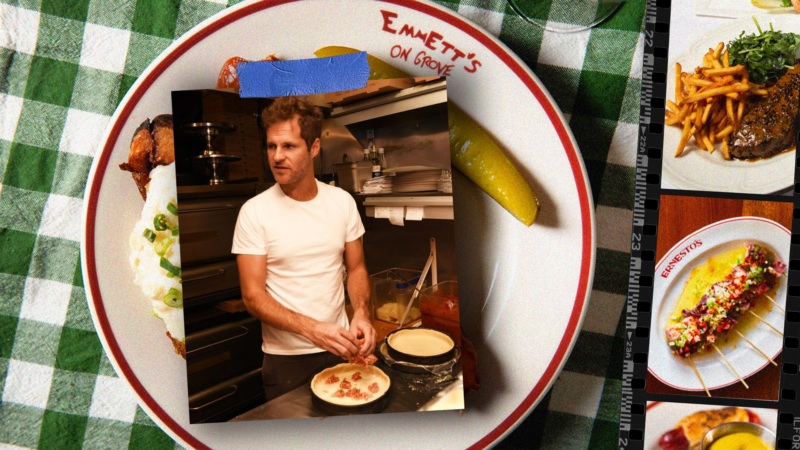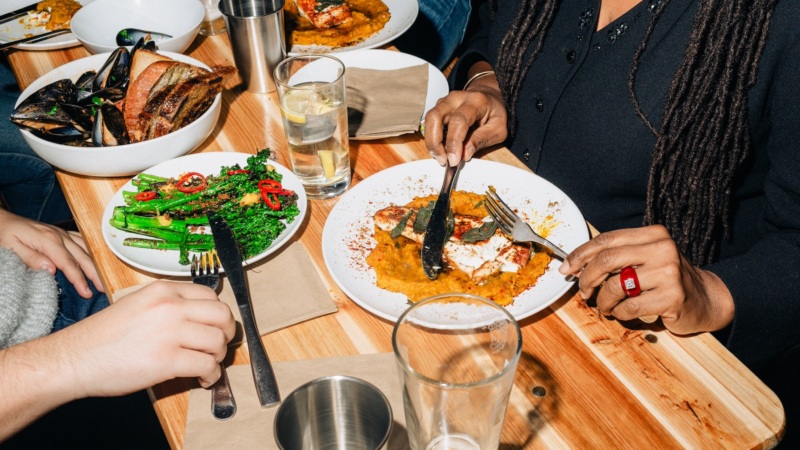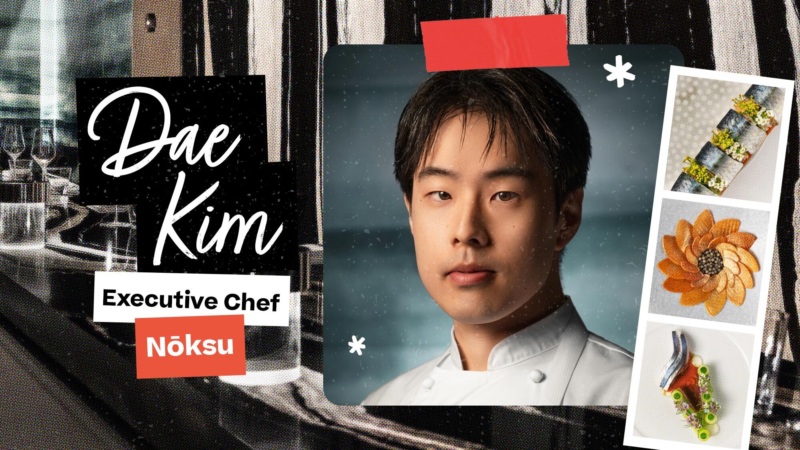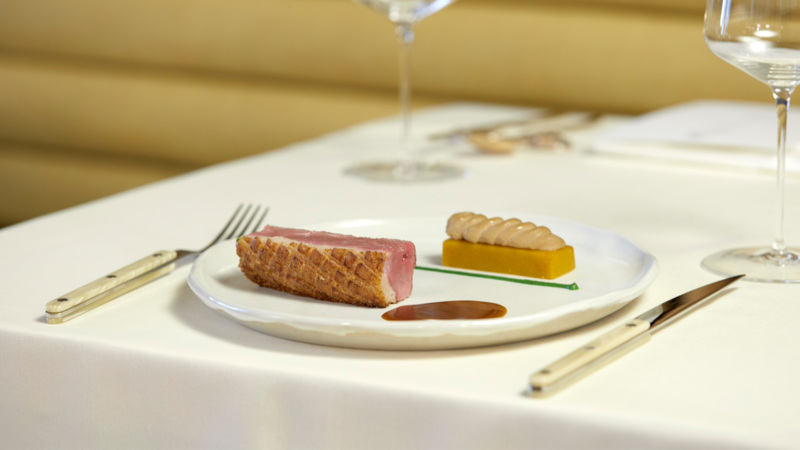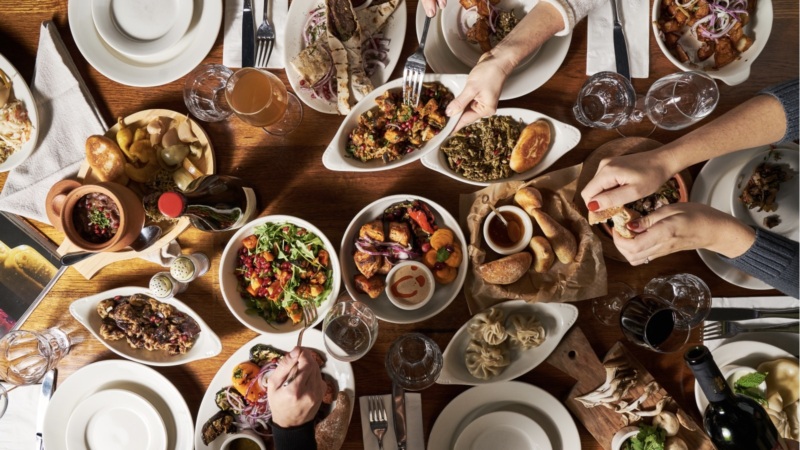
At Wenwen in Brooklyn, Eric Sze Channels the Tastes of Home
At Wenwen, the newest restaurant from 886 partners Eric Sze and Andy Chuang opening today, there’s a dress code — well, sort of.
“I really want this to be a place where people are comfortable wearing pajamas,” says Sze, the chef. “I don’t want there to be any element of pretentiousness here. We’re down-to-earth, and we want to provide a good dining experience, no matter what you wear, no matter your income level, no matter how much you order. We just want you to come here, eat, and feel at home.”
The name for the restaurant itself comes from the two most important women in Sze’s life: his mom, Wenchi, and his wife, Wenhui (Wenhui came up with the name, Wenwen). Opening a second restaurant wasn’t always something Sze and Chuang had planned to do, but when they saw empty spaces on the market following the pandemic, they seized the opportunity.
“Home” is the prevailing theme at this Greenpoint, Brooklyn restaurant, which, in many ways, differs from their first restaurant, 886 (named for Taiwan’s international calling code), which they opened on Saint Marks Place in the East Village in 2018. For one thing, Wenwen is bigger than 886, with 60 seats in total, including a small dining room alcove in the back. A long, handsome wooden bar — left by the space’s former tenants, a bar called The Royal — is one of the first things you see when you enter the foliage-filled space.
“If restaurants could represent age groups and preferences, 886 would very much be like you got into college, everything is fresh, you like to pound sakes and sojus until three in the morning, and your back still doesn’t hurt, and hangovers aren’t that bad yet,” Sze explains. “That’s definitely 886. Here, you’re getting into your 30s. You know exactly what you want to eat. You’re adventurous with bold flavors. But you want to dine in an environment that reminds you of home.”
Home, both for Sze and Chuang, is Taiwan. They’re channeling that through the menu at Wenwen, which spotlights homestyle dishes more so than the stir-fries you might find at 886. “The dishes reflect things that are a combination of the food I had growing up at home, and things I’ve enjoyed eating at restaurants,” Sze says.
Although both 886 and Wenwen are different, Sze hopes there will still be a connecting sense of identity between the two restaurants — something diners will be able to taste in the food, and feel in the hospitality at both. Here, he takes us on a deep dive through the opening menu at Wenwen.

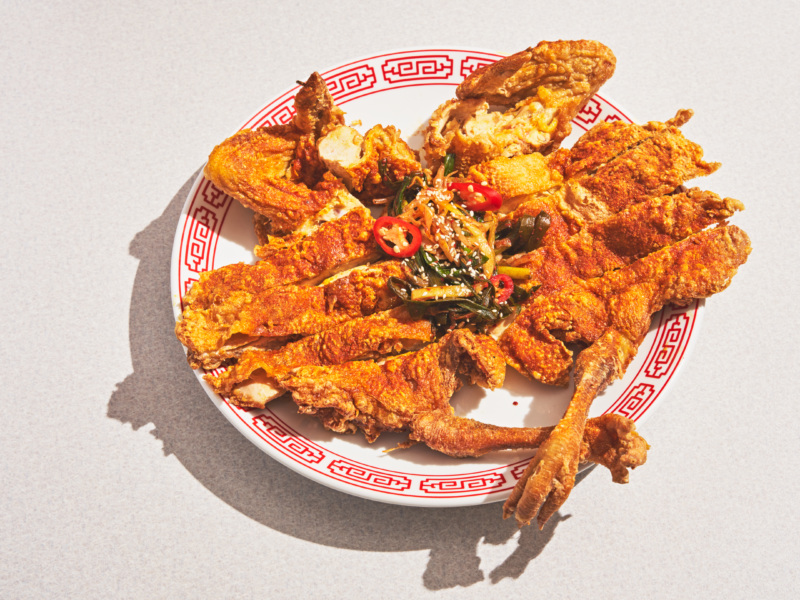
1. Whole BDSM Fried Chicken
Brined, Deboned, Soy Milk-Battered Yellow-Fat Chicken
“I’ve been working on this boneless chicken for f**king forever, since before the pandemic. This is a whole chicken, completely deboned, except that we’re keeping the feet and the wing bones in because it gives you a nice presentation structure, and also because the wings cook a lot faster; if you debone it, there’s only a tiny bit of meat left and it tends to burn off.
With this chicken, the emphasis is almost as much on the chicken itself as it is on the boning process or the batter that, I won’t say we invented, but that we came up with. The chicken we use is Sanhuangji from Chinatown, which is the yellow-fat chicken. They are at least two to three times the price of a regular chicken, but the fat has so much more flavor. I would compare it to grass-fed beef where you can really taste the product, and it’s not just a blob of fat and water. Because they get so much more exercise, the muscle structure is much more intense, and you get a better chew. So, even though the yield of the chicken is much lower, the texture and each bite just has so much more flavor. You get maybe 50% less chicken, but you get 200% more flavor.
Boning them out is difficult, but I think it’s worth it to introduce this kind of chicken to the masses. [Deboning the chickens] has been so much fun; I’ve been racing with the kitchen guys, and my best time is seven minutes and 22 seconds. I’ve seen YouTube videos where people do it in three minutes, but I still need practice so it takes me about seven minutes. And that dish will probably be limited to five orders a night, but it’ll be first come, first served.
The brine is based off of this Taiwanese-Cantonese dish called douruji, which sounds like ‘soy milk’ (dou ru) but it actually is doufuru, or fermented soybeans. The marinade is essentially fermented soy beans, soy milk, Shaoxing wine, five-spice, a little turmeric, a little curry powder, white pepper, black pepper, garlic (lots of it), and lots of scallions and ginger as well. The chicken sits in there for two days so it can really soak up the juice and there’s a pretty high salinity content, so it’s pretty much curing in that.
And then we have the batter. A lot of Asian [fried] chicken is just made with a wet batter, so I knew I wanted to do a wet batter here, but I was having trouble with developing a batter that is really unique. Eventually, I settled on this [batter] because I was at 886, and I [had this epiphany while I] was eating our fried tofu dish. Our crispy silken tofu is naked fried with no batter, no dredge, and because tofu has so much protein content, it crisps up on the edges, and the exterior has just this beautiful crisp. So, I thought, what if we threw a block of tofu into the batter? And also soy milk, which is actually Andy’s idea.
The sweet potato flour [in the batter] is gluten-free, but the bad thing is it doesn’t have much protein; it needs more protein. So, blending in the tofu adds protein, but it also doesn’t add any more gluten. And adding soy milk instead of water adds even more protein. So that entire batter is just like a f**king protein shake. No water is added, and you fill it into a Vitamix, and introduce a f**k ton of air into it, and then you have your batter.
After we apply that batter, we fry the bird in regular vegetable oil, to order. It’s a double fry. We fry it for about three minutes, take it out, and let it rest for two minutes. And then on higher heat we fry it for another five minutes. We take it out, and then dust it immediately with our Taiwan dust: salt, MSG, sugar, and white pepper. And then a little bit of onion powder, garlic powder, smoked paprika, and turmeric — just a tiny bit. The crisp on the batter — have you had fried tofu skin at dim sum? It mimics that texture, but it still has a sturdy body in terms of crisp.
And we serve the chicken with a burnt chive slaw that we developed specifically for this chicken. The slaw is made with flat and yellow chives, bean sprouts, gochugaru, aged vinegar, red vinegar, a little bit of chile oil, sugar, and MSG.
It serves four, and I think the cool thing about this chicken is we’re going to slice it so that [with] every slice of a chicken you get both dark and white meat. So, it’s sliced like a katsu, but in a different way.”
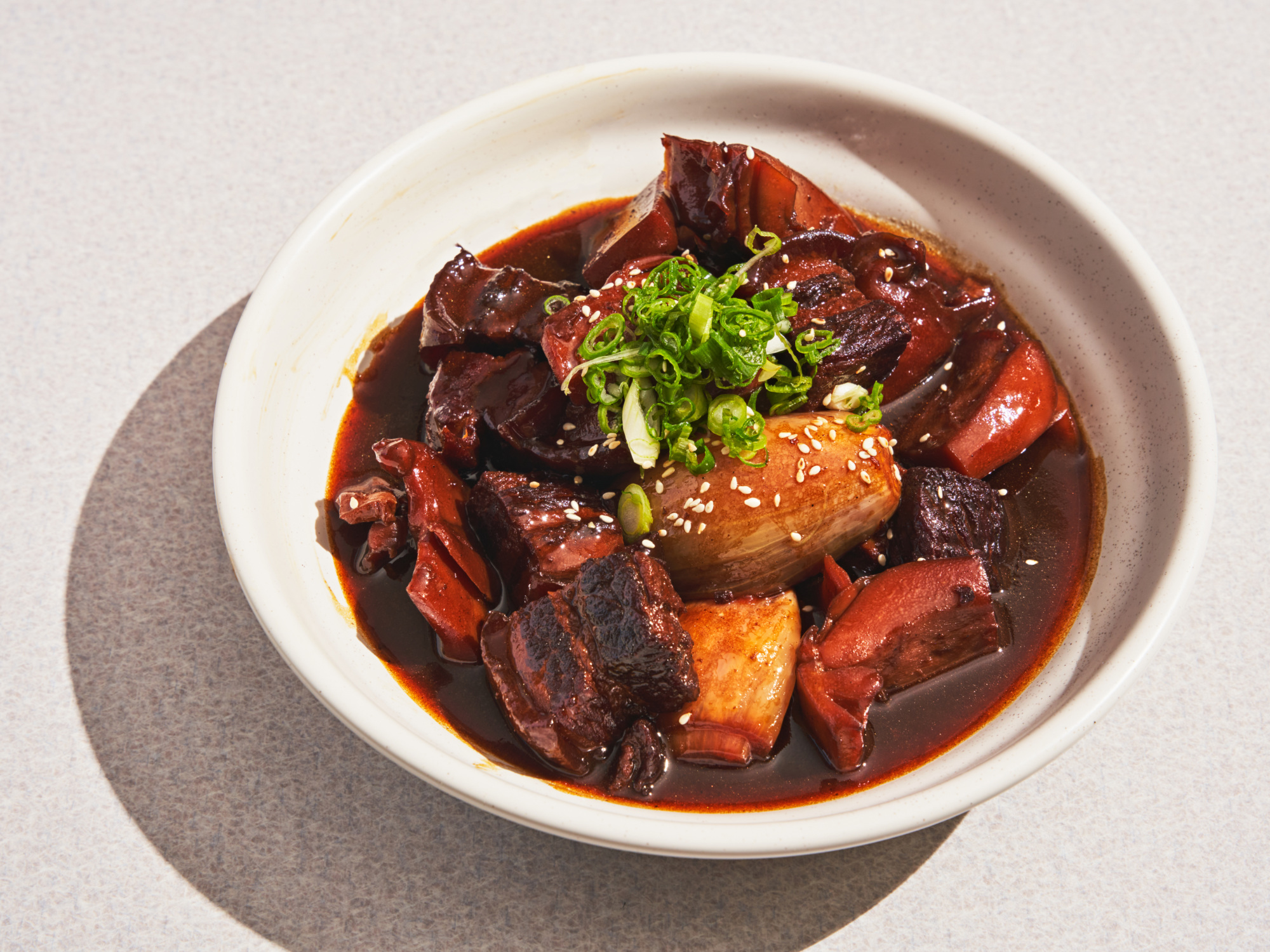
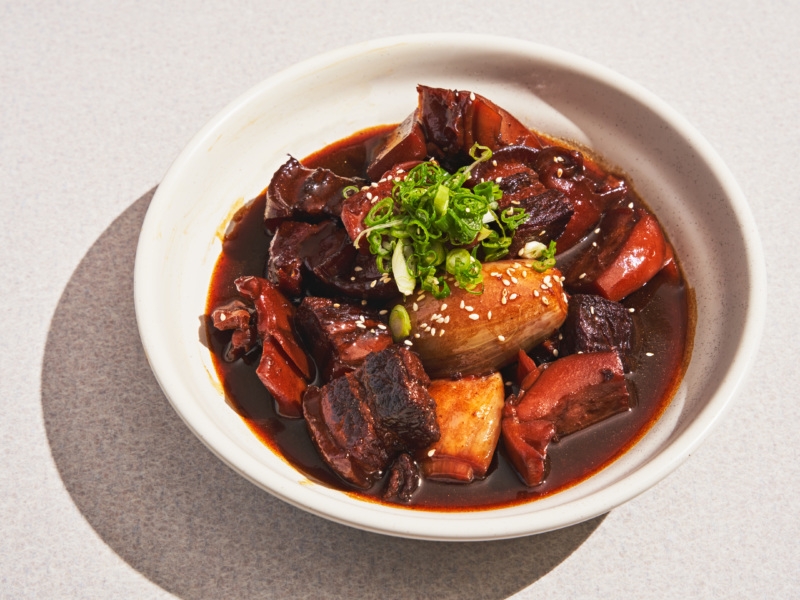
2. Pork Belly & Cuttlefish
“So, this is actually my mom’s recipe, but I switched it up a little bit. She would always make this dish when I was visiting Taiwan on my breaks, and it’s a newer addition to her repertoire. One day I remembered going home, and she made this for dinner, and I told her, ‘This is so f**king good,’ and she said, ‘Don’t swear.’ But it’s essentially just the most perfect surf and turf: The cuttlefish is meaty and briny with the flavors of the sea. And the pork belly is just done very traditional, home-style, and you just let the flavors of these two combine with the sugars, the soy sauce, the hoisin, and the oyster sauce. It kind of binds it all together. And then you’ve got your regular ginger, garlic, scallion.
But in our edition, we use three types of sugar. This is like an ode to Shanghainese cuisine: all the f**king sugar in the world. Everything is so thick and you think it’s oil, but it’s really just sugar. So we’re using palm sugar, Taiwanese black sugar (it’s like brown sugar but less refined), and rock sugar. With these three sugars, we create a syrup. And then we fry the pork in it, and then braise the pork like you would with a regular soy sauce, oyster sauce, a little five-spice, ginger — lots of ginger — scallion, and lots of Huadiao cooking wine, but not just any cooking wine, but Huadiao that’s been aged for five years or more. And then you cut the cuttlefish into big chunks and you throw it in, in the last hour. And then in the last 15 minutes, you throw in a bunch of peeled shallots, whole, and let that braise for 15 to 20 minutes. Because then you get these whole chunks of shallots that are just sweet and just past their rawness, but still holding their integrity; it’s like the perfect condiment. It’s like a garnish [where] you don’t even know that it’s a garnish. Because it’s braised with it, it holds in the sweetness — they’re like little parcels of joy, some nice surprises.
My mom only uses rock sugar, and she doesn’t add in the shallots. And she uses whatever wine she has. Mom is Sichuanese and dad is Shanghainese, so I’ve added two more types of sugars in there. But I haven’t seen that dish in New York, and it’s just got such a distinct flavor with lard and cuttlefish, so that’s something I’m really excited to see. It really reminds me of home. She thinks it’s nothing special, but I really like it.”
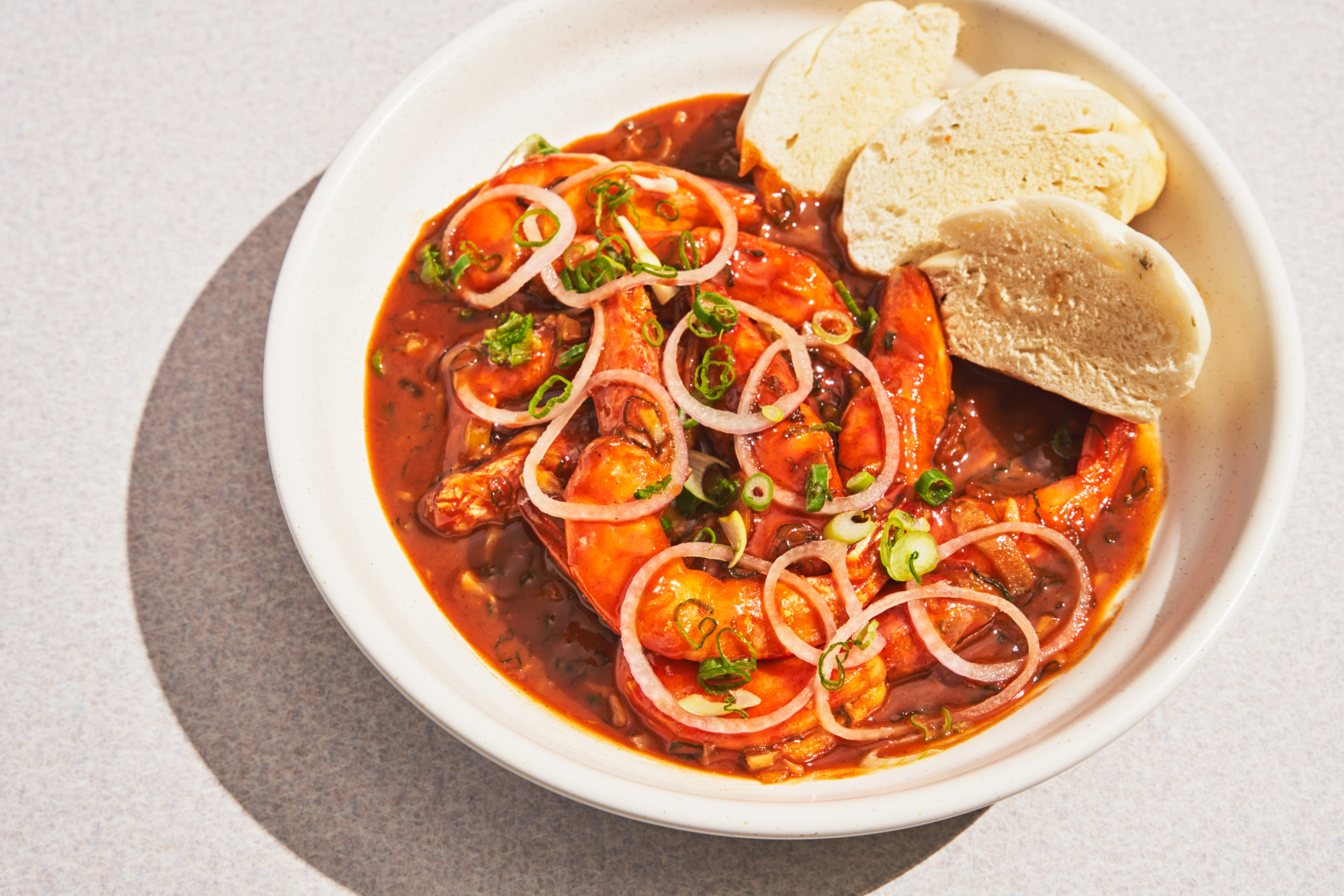
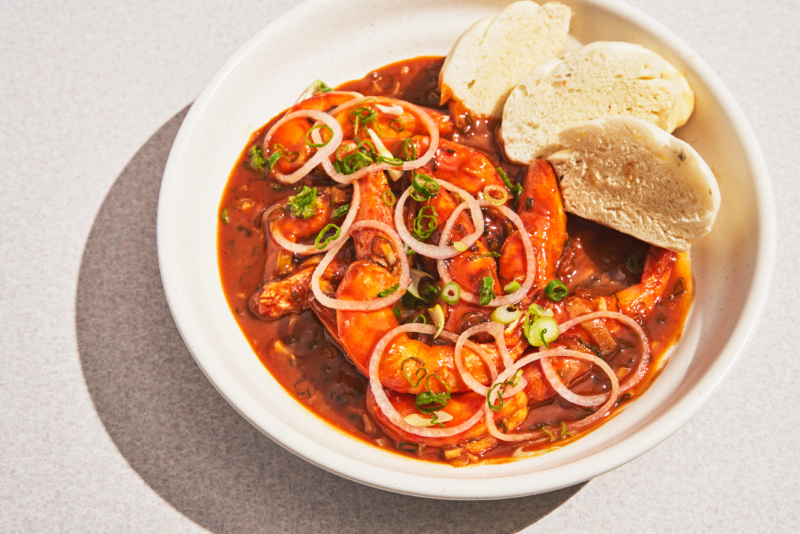
3. Huadiao Shrimp
“So, Huadiao is a type of rice wine; it’s a type of Shaoxing wine, actually. Shaoxing wine is a big category, and Huadiao is extra-aged using a finer grade of glutinous rice. The Huadiao we use is aged for five years and it’s about three times more expensive, or costly, to purchase, but because of its extra flavors, no salt content is added. The normal Huadiao you can get in the supermarkets has like a f**k ton of salt added to it to stabilize it and give it extra flavor, but ours doesn’t need it.
And this dish is really also based off of a Sichuan dish and a Shanghai dish, and merging them together again. The Shanghai dish would be ganshao shrimp and then the Sichuan dish would be like youbao shrimp, so it’s like these two different ideologies and blending them together.
With this one we create a sauce for it. The sauce is made of jiuniang, which is fermented rice that’s like slightly alcoholic; it’s a sweet rice with green Sichuan pepper oil so it’s numbing and floral, and then we add a lot of Huadiao wine. Huadiao wine is kind of like the base of the flavor, and then we have soy sauce, and regular sugar — just regular sugar this time — and some ketchup. And we also add doufuru, fermented soybeans, to the sauce. We blend all of this in the Vitamix because the rice breaks up and thickens the sauce.
And then we make a house lard here, with ginger, scallion, garlic, shallot, onion, and leeks, and we fry that in lard, and we use that as the master oil. So, we add it to different dishes to give it more structure.
We’re just using regular Gulf shrimp, head on and shell on because it’s the only way to go. We take that house lard and then we fry our shrimp a little bit, and then we add in the sauce, let it reduce, and then we serve it with a side of huajuan, a scallion mantou, essentially. It comes in slices so you can eat the shrimp and then dip the sauce with your mantou. That’s what I really like: It’s sweet, savory, numbing, and floral.”
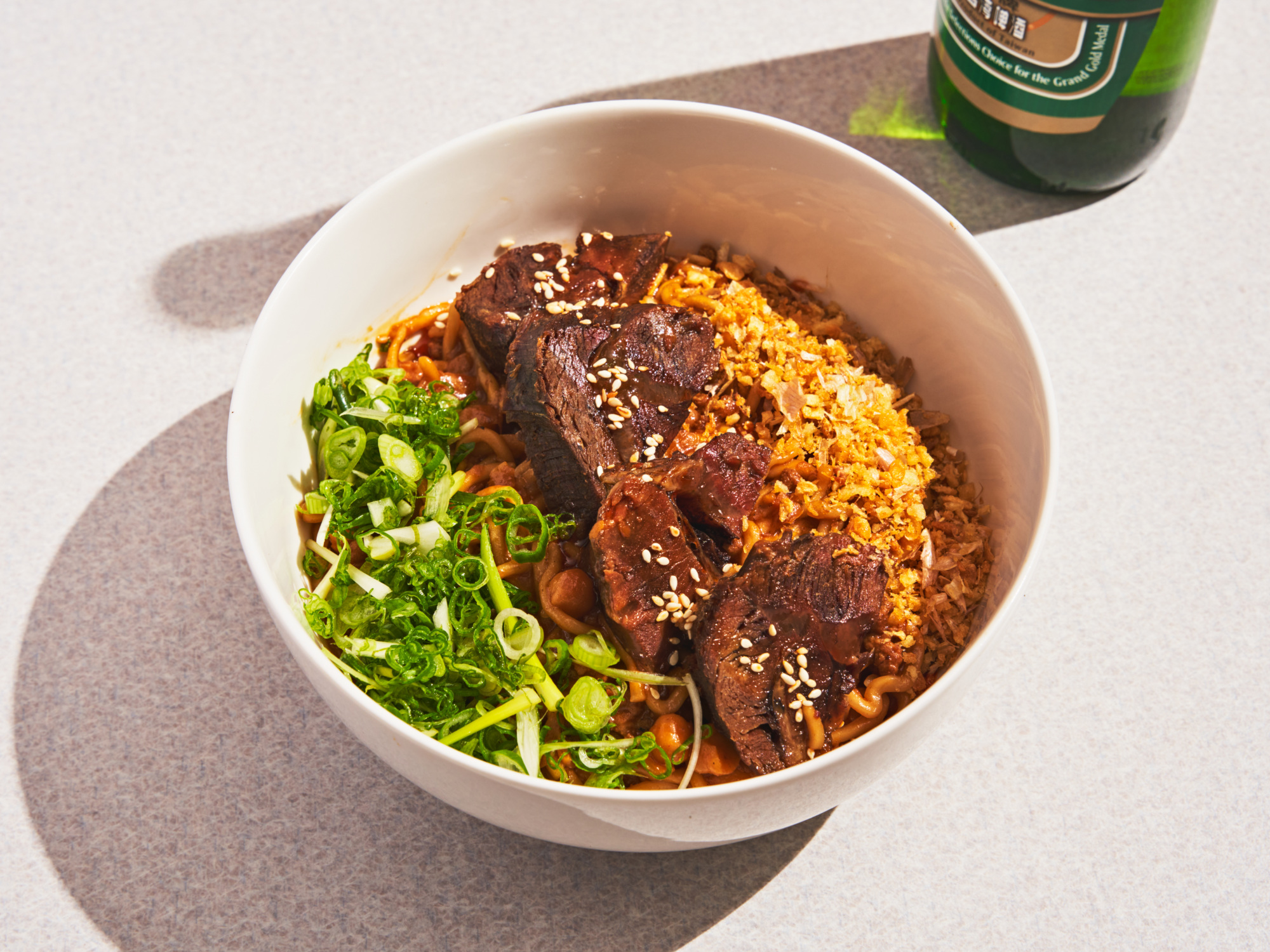
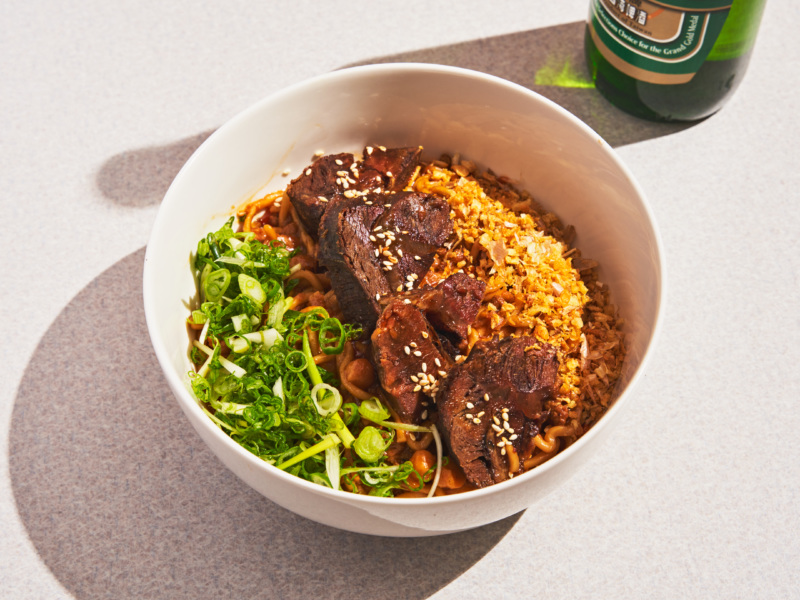
4. 886 Noodle
“Interesting fact: The 886 noodle is not served at 886. It’s kind of an ode to 2016 Eric. When I first entered the restaurant industry with my first restaurant, The Tang, I created this noodle but didn’t really give it a name. But it’s essentially Taiwanese beef noodle soup [combined with] Taiwanese zhajiangmian; the general inspiration behind it is Chongqing wanza and an Italian Bolognese. We also have this chickpea puree that we fry in the lard and miso. We combine these three elements and make it into sort of like a pasta sauce and toss the noodles with it in a wok so it’s spicy, it’s hearty, it’s sweet. It’s funky. It’s thick. With lots of fried garlic on top as well. So this is really kind of an ode to the past. And I think people will like it, because you can’t really find anything remotely similar to it. It’s just such a f**king wild combination of ingredients.
We use just regular wheat noodles. We’re gonna garnish it with fried chunks of beef shanks so it’s crispy on the outside, tender on the inside. And then we drizzle it with chile oil, lots of scallion, and crispy garlic.
It’s very similar to [what I made at The Tang] except I didn’t use a wok back then. We would just reduce it and then just kind of combine it. But this time around, we have the equipment, and we have the techniques. We have the know-how, so it will only be better.
I was sh**faced when [I came up with the original recipe]. I had serious munchies, so I went back to the restaurant, where I put everything into a bowl, and I thought ‘This is really good.’ So I drunkenly wrote [the recipe] down. The next morning I went to work, recreated it, and it was still as good. So yeah, we’re reclaiming that now as the 886 Noodle.”
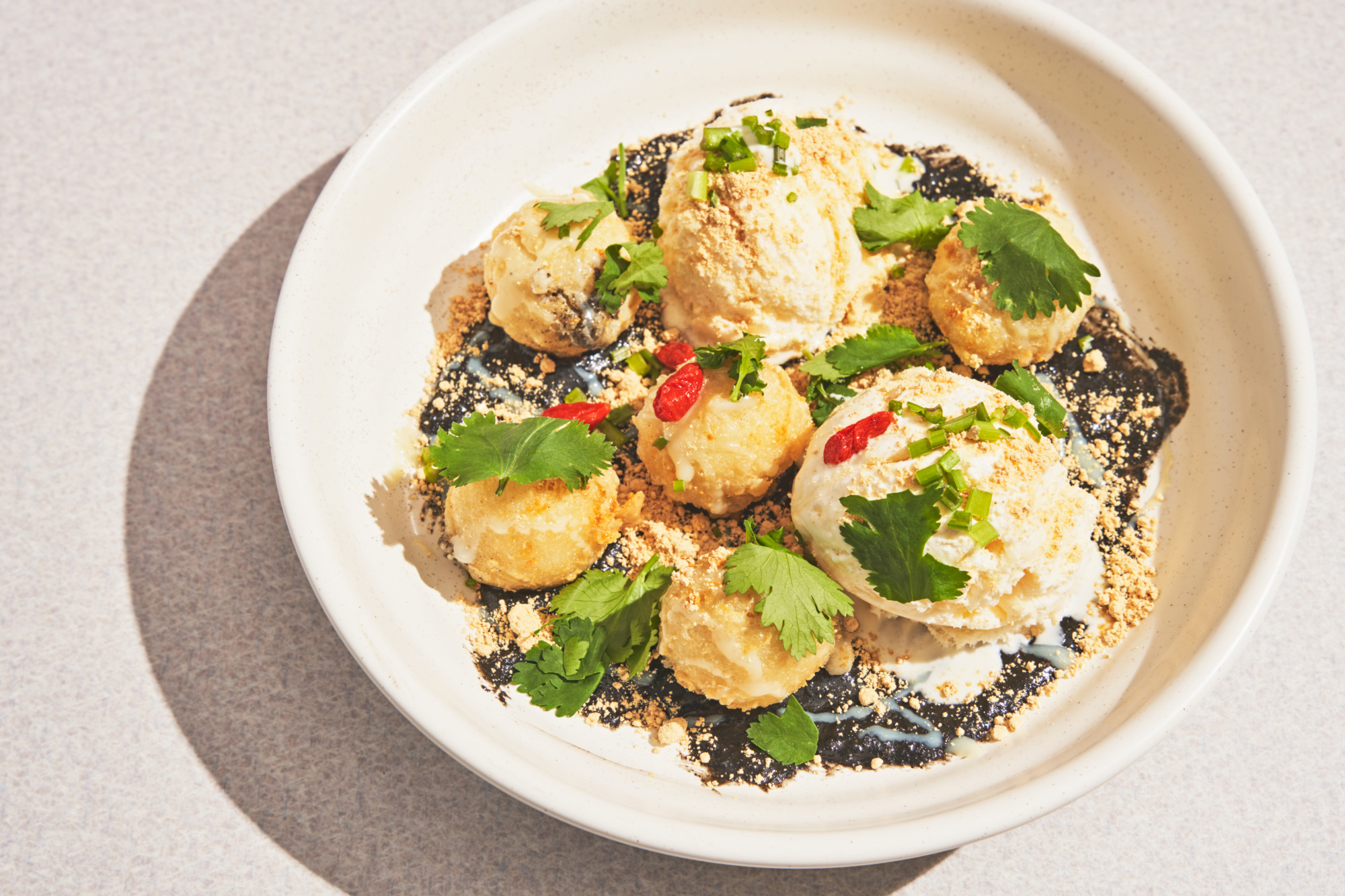
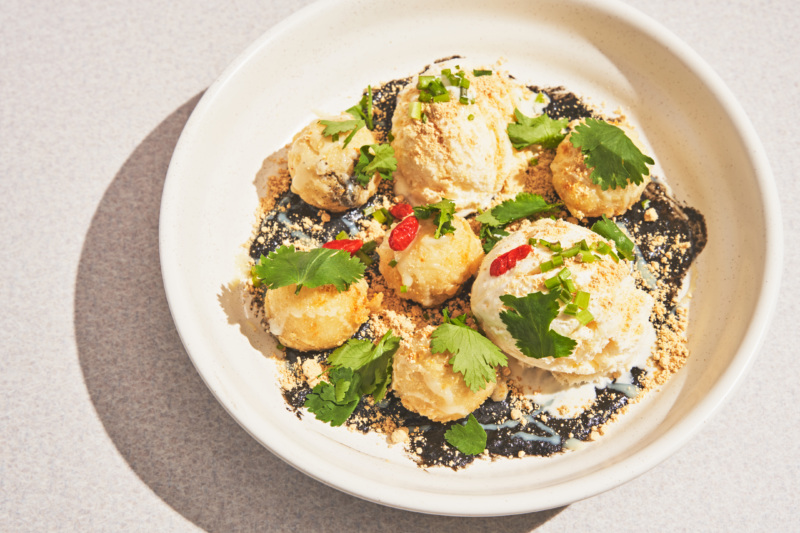
5. Fried Tangyuan Ice Cream
“We take black sesame-flavored tangyuan (sweet rice balls) and we boil it first for about four minutes, and then we freeze it again, because you’re softening the glutinous rice. And then we freeze it again, and we dip that frozen cooked tangyuan in the same soy milk batter that we fried the chicken in and then we fry the tangyuan.
Because the rice layer is already really soft, we don’t want to kind of break that integrity of the rice any further, but we still need that layer of crisp, so that batter really helps. We serve it with vanilla ice cream, as well as dehydrated peanut butter that we cut with a lot of sugar and a little bit of salt, and a f**k ton of cilantro stems and cilantro leaves. They’re finely sliced cilantro stems, so you get some with each bite. Peanut and cilantro is a classic pairing in Taiwanese desserts, and we’re excited to bring that to people.
We’re getting the tangyuan imported from Taiwan; it’s a brand called Laurel. The dish is served on a plate with ice cream. It’s the perfect combination of hot, cold, crispy, creamy. And the cilantro is gonna confuse some people, but then hopefully convert them.”
Wenwen is open Wednesdays to Sundays from 5 to 11 p.m. to start.
Deanna Ting is Resy’s New York Editor. Follow her on Instagram and Twitter. Follow Resy, too.




